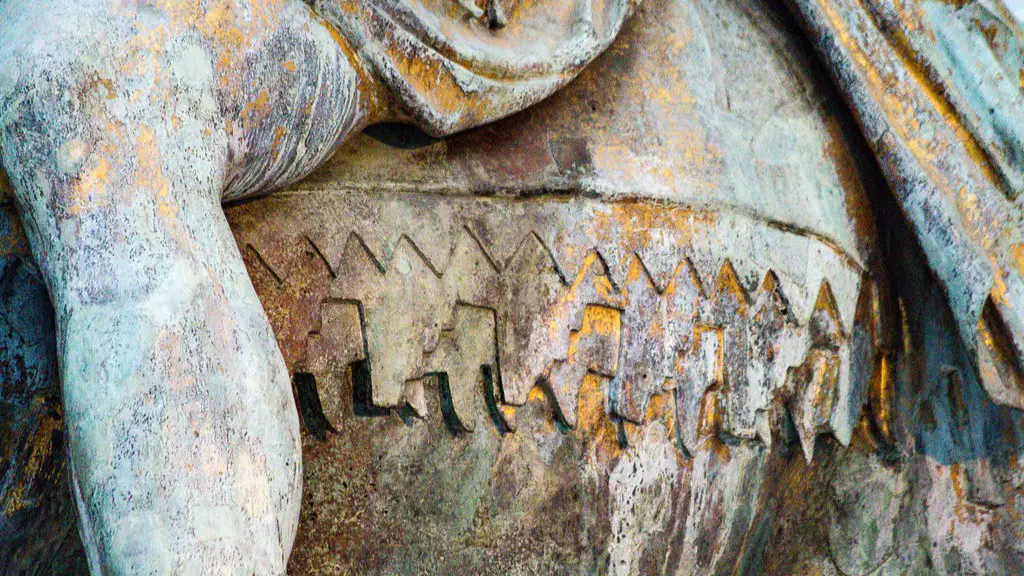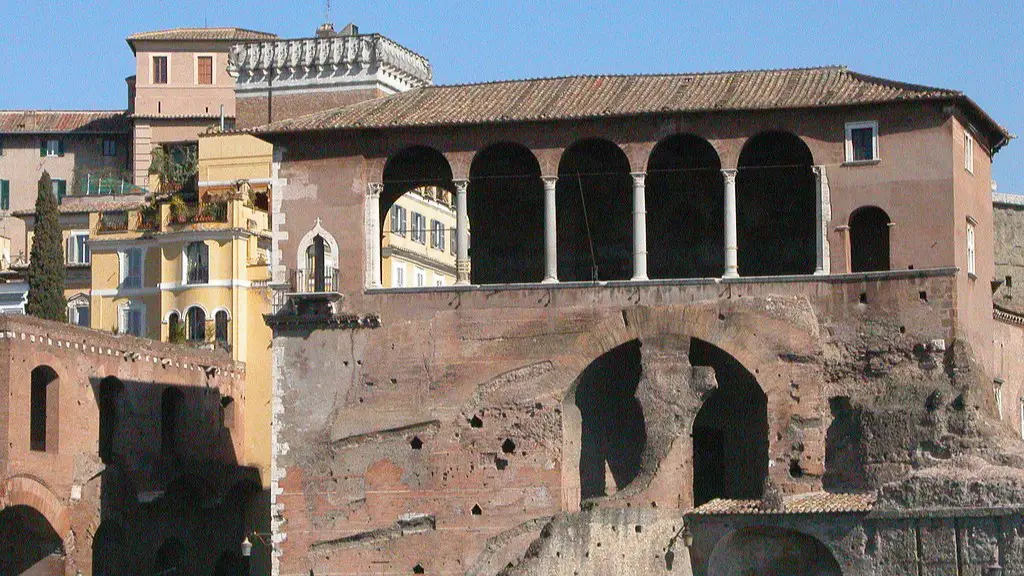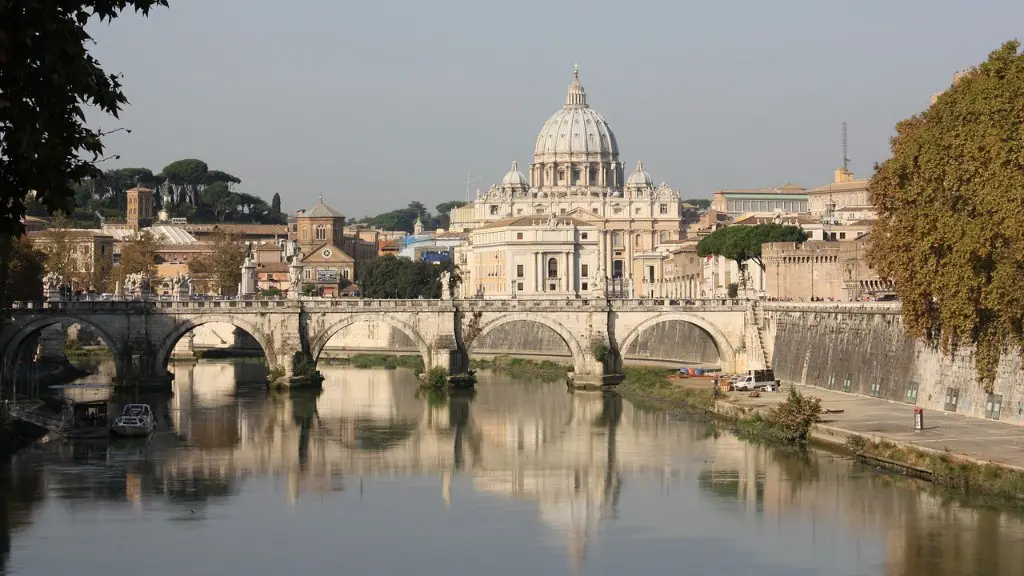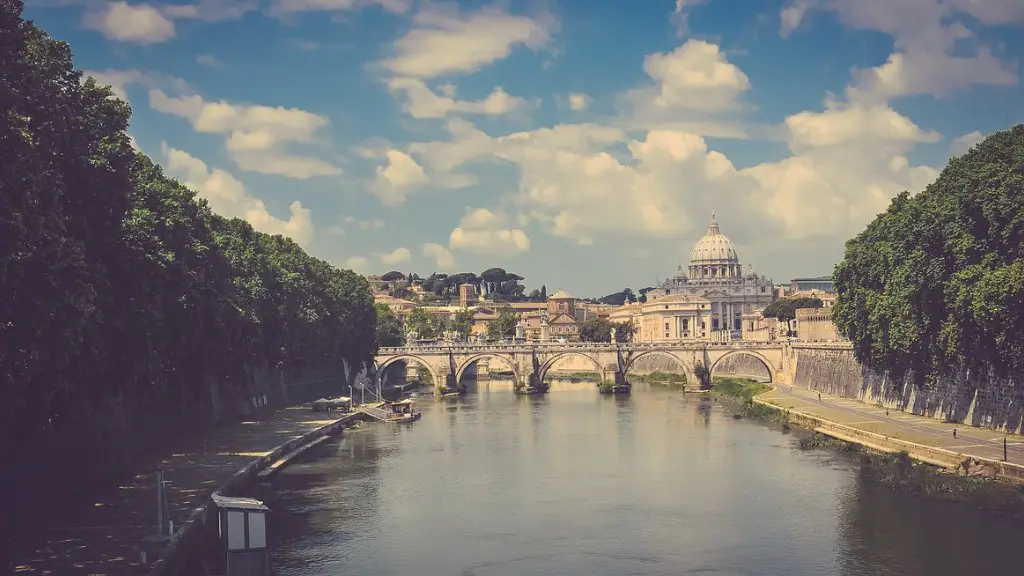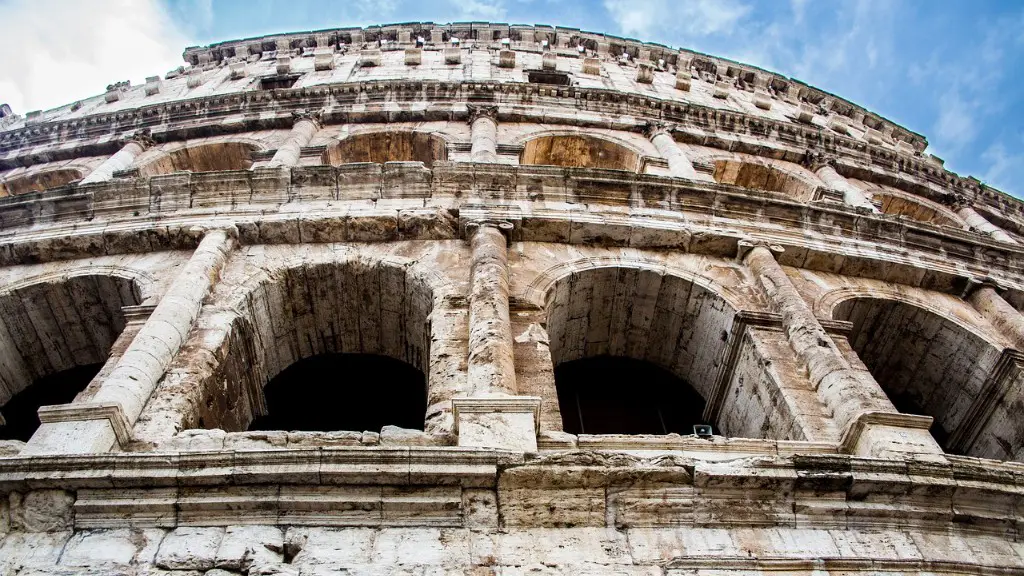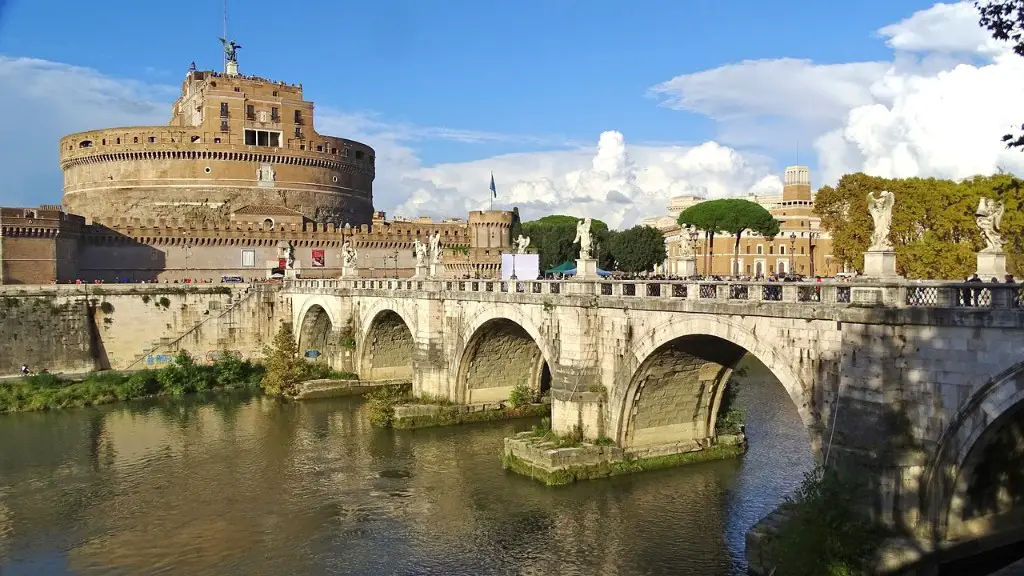The ancient Romans believed that bathing was an important part of their culture, and they built large public baths to take advantage of its health benefits. These baths served as a meeting point for the Roman citizens, providing a chance to converse, exercise, and enjoy leisure activities. They were essential for the social, economic and political life in Ancient Rome and were used by people of all ages and classes.
The public baths in Ancient Rome were places of relaxation and cleanliness, as well as a source of engaging entertainment for the Romans. They had a variety of rooms, such as the cold bath, warm bath and hot bath, each of which served a different purpose. Some of the rooms were used for physical and mental relaxation, while others were used as social gatherings.
Public baths served as an important part of Ancient Roman society. They provided a source of relaxation and a place to socialise with friends, family and even strangers. They didn’t just offer a place to bathe. Some of the activities available at the baths included eating, drinking, playing sports, gambling, and performing religious rituals.
Public baths also served an important role in Ancient Roman society, in that they provided a sense of community and connectedness. They were a place where people from all walks of life could come together and share a common space. This was particularly beneficial for those living in poverty-stricken areas, as it was an opportunity to meet people of similar socio-economic backgrounds and form a bond.
Perhaps most importantly, public baths provided an important health benefit. This was especially true during the Roman Republic, when cleanliness was not a particularly high priority. The baths provided hot and cold water, which could be used to cleanse the body and provide comfort from the summer heat. They also offered an opportunity to relax and unwind after a long day of labour.
Societal Impact of Public Baths
The public baths in Ancient Rome were vital to the development of the Roman society. It was a place of relaxation, socialisation and entertainment for all classes of Roman people. It was not just a place for bathing, but a place for people to come together and form connections. It provided a sense of community and camaraderie, and allowed people from all walks of life to connect and forge friendships. This undoubtedly had an impact on the social life in Rome, and contributed to the strong sense of community that made the Roman Empire great.
Public baths also had an impact on the economy. The baths were expensive, and people had to pay to use them. This money was then used to help fund buildings and projects in the city. Public baths created jobs, which in turn helped to boost the economy.
Public baths also had an impact on politics. They allowed powerful Roman citizens to come together and create connections. This opened the doors to discourse and debate, which helped shape Roman political systems.
Conclusion of Public Baths
Public baths were an important part of Ancient Roman culture and served an essential role in the social, economic and political life in Rome. They provided a sense of community and connectedness for the citizens of Rome, and were a place for relaxation and socialisation. They were also a source of entertainment, and allowed people from all walks of life to come together and share a common space. From a health perspective, public baths provided cleanliness and clean water, which were essential for the Romans to stay healthy. Additionally, the money from the public baths was used to fund important buildings and projects in the city. Finally, public baths allowed powerful Roman citizens to come together and create connections, which helped shape and inform Roman political systems.
Technology used in Public Baths
The technology used in public baths was state-of-the-art for its time. The baths employed various water distribution and heating systems, which were powered by either animal or human-powered slave labour. The water was then transported to the various baths, where it was heated by furnaces. Roman engineers also developed a variety of systems to clean the water and prevent it from becoming contaminated.
The Romans also invented a variety of tools and utensils that made bathing easier. These included large basins for bathing, brushes for scrubbing the body, and perfumes and other scented oils. These all served to make bathing a more indulgent experience.
Various types of lighting were also used in public baths, such as oil lamps and candle sconces. This was particularly beneficial for people engaging in physical activities in the baths, as it could help to ensure that the area was adequately illuminated.
Baths as Works of Art
Public baths in Ancient Rome were not just places for bathing and relaxation; they were also works of art. Every aspect of the baths, from the architecture to the furniture, was meticulously taken care of and planned out. The baths were decorated with marble columns, mouldings and ornate decorations, and often featured statues of a variety of gods and goddesses. It was a common practice to write a poem on the wall of the baths as another form of decoration.
The public baths in Ancient Rome also made use of various forms of music and entertainment. It was common for musicians to perform at the baths, and they were often accompanied by dancers and other performers. This made the baths a place of leisure and joy, as people were able to take a break from their hard daily lives and find a moment of respite.
Public baths were also a form of meditation. They allowed the Romans to take a moment and rest their minds. This was thanks to the presence of the gods and goddesses that were often depicted in the architecture and decorations of the baths, as well as the soothing sound of the music.
Significance of Gyms in Public Baths
Public baths also had gyms, which were often used by the Romans to stay fit and healthy. These gyms featured a variety of activities and machines, such as weightlifting, shearing and even archery. This helped the Romans to stay fit and strong. Some of the gyms even featured large outdoor pools for swimming, which was an important form of exercise for the ancient Romans.
The gyms also allowed for socialisation and competition between the Romans. This was especially important for young men, as it was seen as a sign of strength and honour. This would often result in competitions of strength between the Romans, which served to bring the community closer together.
The gyms in public baths were also used as a form of entertainment. The Romans often staged mock gladiator fights, where people would fight each other with wooden swords and shields. It was a fun and exciting experience for all involved, and served to bring the community together.
Overall Benefits of Public Baths
The public baths in Ancient Rome provided a wide variety of benefits, both physically and mentally. They provided a safe and clean environment where people could relax and socialise with their friends and family. They also served an important role in the Roman economy and politics, as the money from the baths was used to fund important projects. Lastly, the presence of the gods and goddesses gave people a chance to meditate and take a break from their hard daily lives.
Public baths were essential for the Roman Empire, and were a vital part of their culture. They provided a sense of community and connectedness, and allowed people from all walks of life to come together in a safe and clean environment. They were a place of relaxation, leisure and entertainment, and provided an important form of exercise for the ancient Romans. Finally, the public baths brought people together and helped to shape the Roman Empire.
The Decline of Public Baths
Public baths continued to be popular in Roman society until the fall of the Roman Empire. In the late fourth and early fifth centuries, the decline of the Roman Empire was reflected in the decline of the public baths. This was due to political and social upheaval, as well as the rise of Christianity and its views on leisure activities at public baths.
The decline of the public baths in Rome was also due to the spread of disease and pollution in the city. The baths were often filled with polluted water, which was not safe for drinking or bathing. This was a result of the poor sanitation of the city, and made it dangerous for people to visit the baths.
As the Roman Empire slowly began to decline, public baths slowly began to fade away. This was due to the rise of Christianity, which frowned upon leisure activities at public baths, and the spread of disease and pollution in the city. By the fifth century, public baths had all but disappeared in Rome.
Legacy of Public Baths
The public baths of Ancient Rome had a lasting impact on the world. They served as a model for modern public baths, which are still around today. The concept of public gathering places for health and relaxation is still alive and well, and the baths of Ancient Rome still serve as an inspiration for modern bathhouses and spas.
Public baths also left a lasting mark on the art and architecture of the Roman Empire. Many of the sculptures, mouldings and decorations in the baths were preserved for centuries, and continue to survive today.
Finally, the baths of Ancient Rome left a lasting mark on our lives. The idea of public gathering places for health and relaxation has stayed with us, and modern bathhouses, spas and public swimming pools can still be found around the world. The public baths of Ancient Rome may be long gone, but their legacy will live on forever.
